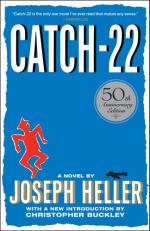|
This section contains 388 words (approx. 1 page at 400 words per page) |

|
1940s: The U.S. invades Normandy, France, in June, 1944, while massively bombing Japan. Two atom bombs dropped on Japan in August will lead to Japan's surrender. The war ends in 1945.
1960s: In November 1961, President Kennedy begins increasing the number of American advisers in Vietnam, which will grow from 1,000 to 16,000 over the next two years. Two U.S. Army helicopter companies, the first direct American military support of South Vietnam, arrive in Saigon. In 1965, President Johnson will begin sending combat troops, without getting the approval of Congress.
Today: Recent police actions, such as Operation Desert Storm in 1991 and the 1983 invasion of Grenada (an island in the Caribbean), have been publicly questioned by Americans even as these actions were taking place. Congress must now vote on such actions.
1940s: Jim Crow laws in the South are the most obvious evidence that blacks are expected to keep...
|
This section contains 388 words (approx. 1 page at 400 words per page) |

|




